Geckos are a very interesting group of lizards that are incredibly diverse. They are widespread in the wild and are also common household pets. Although a pet gecko can seem small, some species can reach incredible sizes! This article will break down all things gecko and investigate the world’s largest gecko!
What is a gecko?
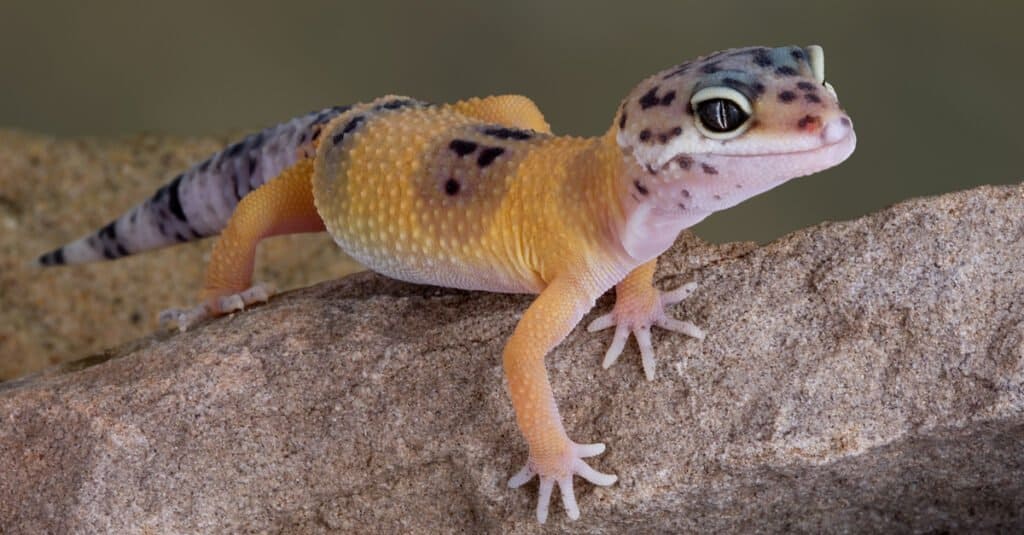
Leopard
geckos are the most common gecko species kept as pets.
©Cathy Keifer/Shutterstock.com
Geckos are a type of lizard that belong to the infraorder Gekkota. Geckos have the most species of any group of lizard- 1,500 distinct species! These lizards range greatly in size, geography, and coloration. Geckos have very keen night vision and interestingly, they cannot blink. Many species do not have eyelids and have to remove debris from their eyes by licking their eyeballs. Another cool fact about geckos is that 60% of species have pads on their toes that allow them to stick to different surfaces. Don’t be startled if you see one climbing up a wall or hanging upside down!
Where do geckos live?
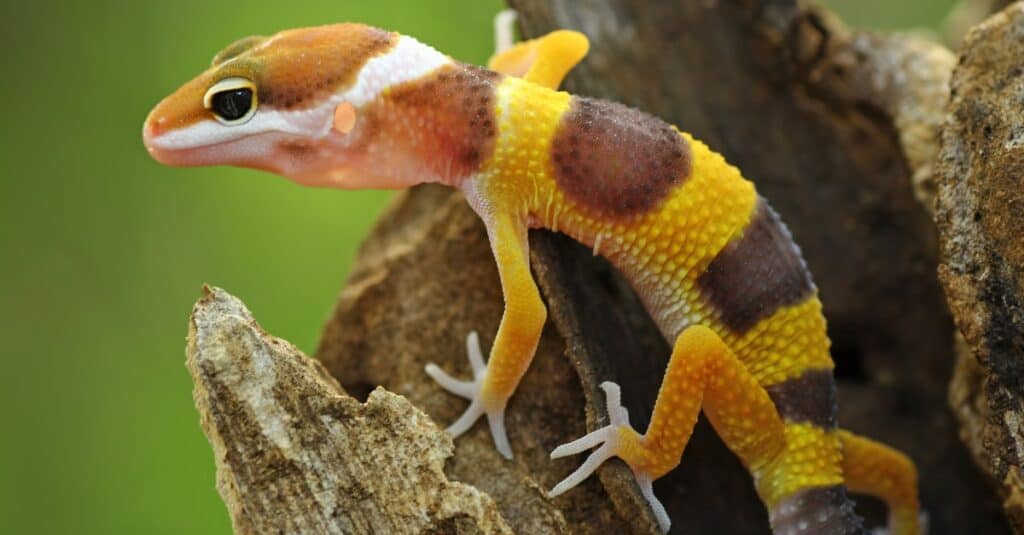
Baby leopard geckos are only a few inches long and weigh less than 10 grams
©iStock.com/agus fitriyanto
Geckos live on every continent except Antarctica. They often live in urban areas and many different species are popular pets. The most popular pet gecko species is the leopard gecko which is about 8 to 11 inches long. In the wild, leopard geckos live in dry, savanna-type habitats including in Pakistan, Afghanistan, and India. Many gecko species also inhabit forested areas and spend most of their time in trees. Several species of geckos have been introduced to new areas and have become invasive species, including in the United States. Unlike most lizard species, geckos are nocturnal and are most active at night. The variability between the many gecko species allows them to inhabit many different ecosystems around the world.
What are some notable gecko species?
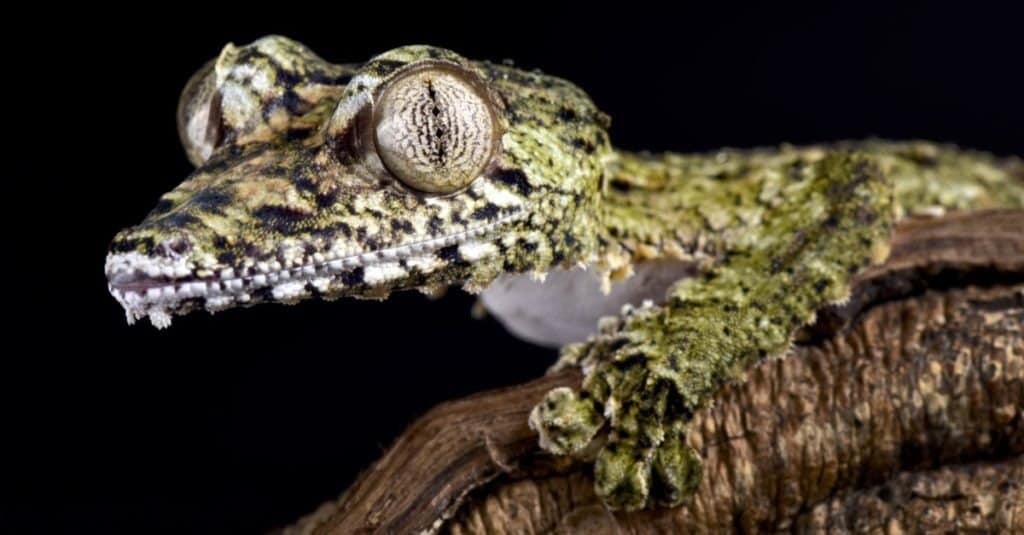
A giant leaf-tail gecko on a log.
©reptiles4all/Shutterstock.com
Of the 1,500 different gecko species, some are particularly interesting when it comes to size. One of the largest species of extant (not extinct) geckos is the Tokay gecko, Gekko gecko. This species is native to Asia and the Pacific Islands. It grows up to 12 inches long including the tail! Tokay geckos have been introduced to the wild in Florida and have an established population there now, as well.
An even larger species is the giant leaf-tail gecko, which is endemic to Madagascar. The giant leaf-tail gecko can grow 13 inches long! In stark contrast, the smallest species of gecko is the Jaragua dwarf gecko. Jaragua dwarf geckos grow to be 14-18 mm not including the tail; that is smaller than the diameter of a U.S 25 cent coin. To put this in perspective, a blue whale is 1,600 times as long and weighs over a billion times more than a Jaragua dwarf gecko!
What do geckos eat?
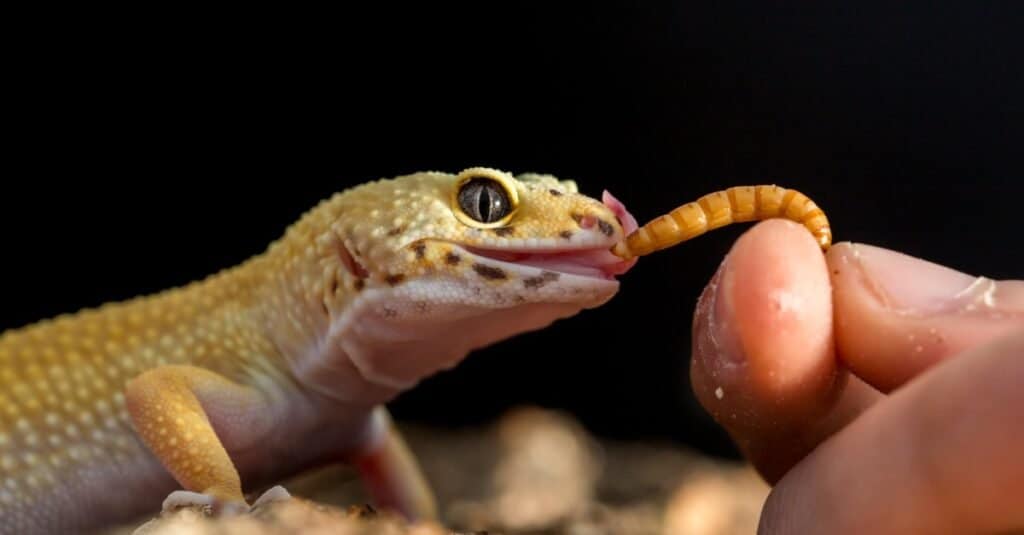
A pet leopard gecko takes a bite out of a mealworm
©iStock.com/MattiaATH
Most gecko species are carnivores. Smaller species tend to feed on insects including moths and mosquitos. Pet geckos are commonly fed mealworms, flies, and crickets. Larger gecko species, including the Tokay gecko, primarily eat invertebrates such as crickets, cockroaches, and beetles. They also may eat small vertebrates such as mice, rats, or snakes.
What is the largest living gecko species?
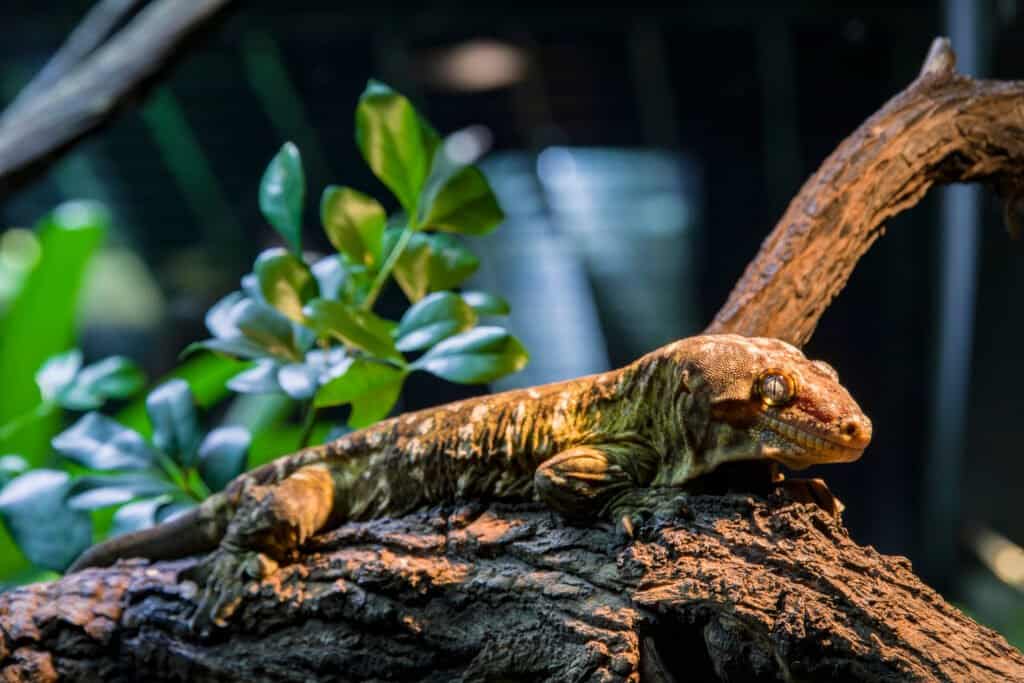
New Caledonian giant geckos are endemic to New Caledonia.
©Danny Ye/Shutterstock.com
Of species alive today, the largest gecko is the New Caledonian giant gecko! This massive lizard can grow up to 14 inches long! The New Caledonian giant gecko is 200 times larger than the Jaragua dwarf gecko! That is a lot of variation amongst one group of lizards.
The New Caledonian giant gecko is endemic to New Caledonia, Oceania. This gecko is an example of island gigantism. Island gigantism is a biological phenomenon where on islands, some animals tend to be larger than their mainland counterparts. This is because predatory mammals are often missing from island ecosystems so smaller animals, like geckos, grow over evolutionary time to fill that niche.
These large geckos are a nocturnal and arboreal species. This means they are only active at night, and they live in trees rather than on the ground like terrestrial species. Like their gecko relatives, New Caledonian giant geckos are carnivores and eat a variety of invertebrates and some small vertebrates. They also feed on tree sap, fruit, and nectar. Many different gecko species have distinct vocalizations. The New Caledonian gecko has the nickname “devil in the trees” because of its strange, loud growling noise.
What is the largest gecko species ever?
Including extinct species, the largest gecko ever is Delcourt’s giant gecko! Delcourt’s giant gecko, Haplodactylus delcourti, could grow up to 23.6 inches long including the tail! This species is believed to have existed in New Zealand, however there are no verified reports of seeing this lizard alive in the wild. A taxidermized Delcourt’s gecko was found in the basement of a natural history museum in Marseille in 1986. This is the only verified specimen of this species. Some theorize, however, that Delcourt’s giant gecko is the large, forest-dwelling species referenced in Māori tradition, kawekaweau. Lack of fossil evidence leads some scientists to believe that this species did not originate in New Zealand at all.
How are geckos doing today?
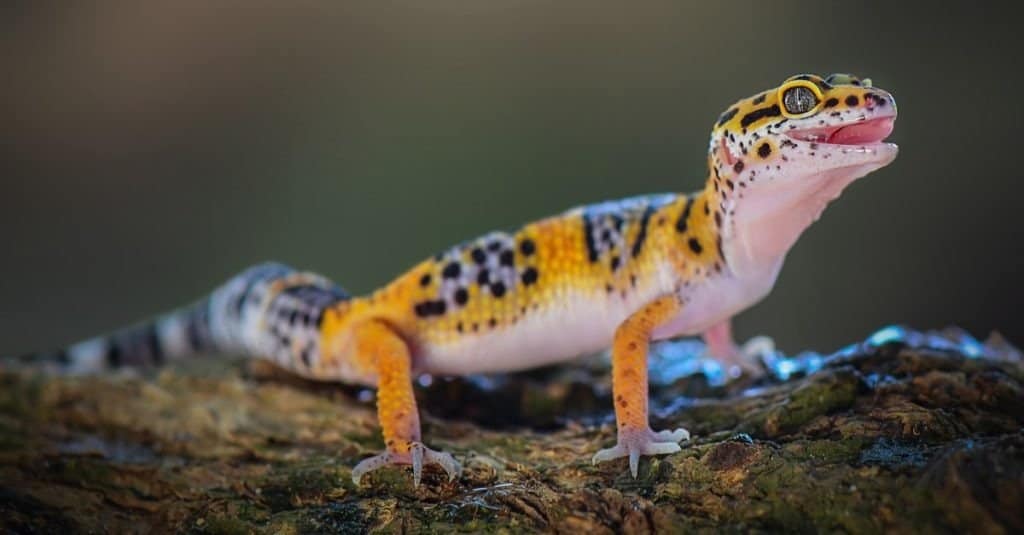
An adult leopard gecko on a tree branch.
©DWI YULIANTO/Shutterstock.com
A large number of gecko species exist around the world and each face different ecological challenges. Delcourt’s giant gecko is extinct, but the New Caledonia giant gecko has a conservation status of least concern. While many species populations are stable, some are at risk. The striped gecko has a conservation status of endangered, the Penang Island slender gecko is a vulnerable species, and Gekko badenii is also endangered, to name a few.
Geckos also pose an environmental risk as invasive species. An invasive species is one that is introduced to a new area and puts the ecosystem out of balance. For example, if an animal was brought to a new place where it had no natural predators, their population could grow unchecked and wreak havoc on prey species. Invasive gecko species have been introduced to new environments around the world by accident, and as a result of the pet trade. Many exotic geckos are very popular pets, however when they are released or escape into the wild, they can be very problematic.
The photo featured at the top of this post is © Ken Griffiths/Shutterstock.com
Thank you for reading! Have some feedback for us? Contact the AZ Animals editorial team.






